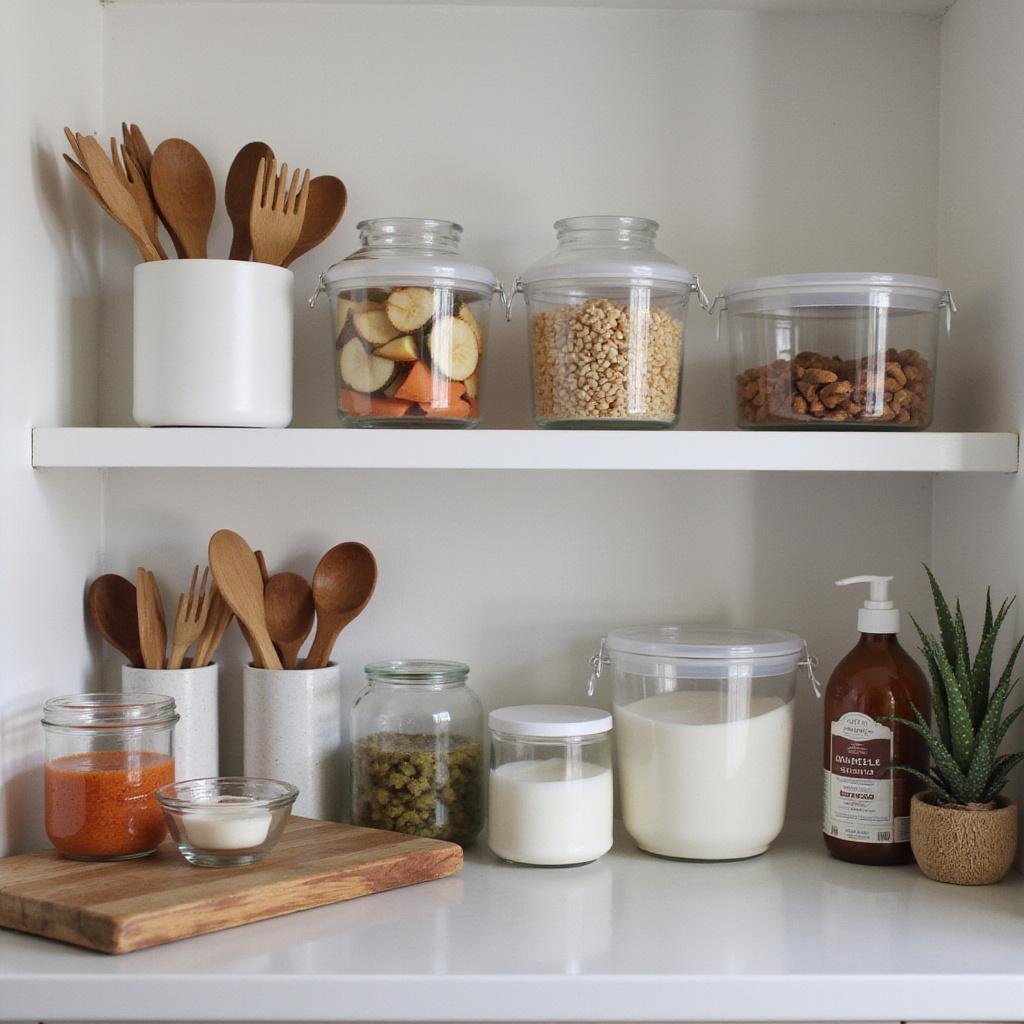1. Introduction
In today’s eco-conscious world, developing a no-waste kitchen routine has become essential for minimizing environmental impact while saving money and promoting healthier living. Transitioning to a sustainable kitchen involves strategic choices such as reducing plastic usage, adopting zero-waste storage solutions, and practicing mindful grocery shopping. An effective best kw approach includes integrating versatile tools like the Ninja SLUSHi with RapidChill Technology for homemade beverages, which can significantly reduce reliance on packaged drinks. Throughout this guide, you’ll discover how to implement these strategies and utilize must-have kitchen gadgets to successfully build a no-waste kitchen routine that’s both practical and environmentally friendly.
2. Why Is Building a No-Waste Kitchen Routine Important?
Creating a no-waste kitchen routine is crucial for sustainability and household efficiency. Excess packaging from supermarket products, food waste, and disposable plastics contribute heavily to environmental degradation. Embracing a best kw lifestyle means supporting sustainable practices such as shopping in bulk—paired with innovative tools like the Fullstar Vegetable Chopper and Spiralizer—to reduce waste and streamline food preparation. These habits not only lessen your carbon footprint but also promote fresher, more nutritious meals. Plus, they offer significant savings over time by minimizing unnecessary purchases of packaging materials, aligning with current kw1 trends in eco-friendly living.

3. Practical Steps to Build a No-Waste Kitchen Routine
3.1 Embrace Bulk Buying and Reusable Containers
One of the best kw strategies for a sustainable kitchen is purchasing in bulk and storing essentials in reusable containers. This significantly cuts down on single-use plastic bags and bottles. For maximum convenience and durability, consider investing in JoyJolt Borosilicate Glass Storage Containers, which are perfect for organizing bulk staples like rice, beans, and dried spices. Incorporating these containers and buying from bulk sections at local stores or online helps build a last kw eco-friendly routine that reduces waste while keeping your kitchen tidy. Don’t forget, using eco-friendly packaging minimizes plastic pollution—an essential requirement for sustainable living documented in our guide to naturally cleaning your fridge with citrus.
3.2 Opt for Reusable Shopping Bags and Beeswax Wraps
Switching to reusable shopping bags, like those from glass storage containers, reduces dependency on wasteful plastic bags, a major contributor to marine pollution. For food storage, incorporate beeswax wraps—an essential (DIY beeswax wraps guide)—that are biodegradable alternatives to cling film. These wraps keep your produce fresh naturally and are easy to wash and reuse, aligning with the best kw practices for sustainable storage. The combination of eco-friendly bags and wraps supports a last kw lifestyle aimed at waste minimization while ensuring food freshness.
3.3 Practice Zero-Waste Food Preservation
Extending the shelf life of food via techniques such as drying, fermenting, and canning reduces waste and saves money. For example, preserving excess herbs or fruits with proper canning equipment like the Cuisinart Bread Maker Machine or dehydration tools can help in avoiding spoilage. Moreover, storing leftovers in reusable containers like the glass Tupperware sets prevents unnecessary disposal. These practices embody the kw1 spirit of mindful consumption and are pivotal in building a no-waste kitchen routine.
3.4 Compost Organic Waste
Composting kitchen scraps such as vegetable peels, coffee grounds, and eggshells turns waste into a valuable resource. Setting up a compost bin—whether in your backyard or done indoors with dedicated bins—can drastically lower your landfill contributions. Incorporating composting into your best kw lifestyle not only reduces waste but also enriches your garden soil. Resources like the TOSHIBA Microwave with smart humidity sensor and the Ninja Air Fryer Pro make meal prep and leftovers management more efficient, supporting your waste reduction goals.
4. Benefits of a No-Waste Kitchen Routine
- Environmental Impact: Significantly reduces plastic usage and food waste, helping combat pollution and climate change.
- Cost Savings: Bulk buying and reusable containers lower grocery bills and reduce the need for disposable packaging.
- Healthier Living: Eating fresh and minimizing plastic exposure supports wellness and reduces chemical intake.
- Household Efficiency: Organized, clutter-free spaces streamline cooking and cleaning routines, enhancing overall kitchen productivity.
5. Frequently Asked Questions (FAQs)
What are the simplest ways to start building a no-waste kitchen routine?
Begin with essential steps such as replacing single-use plastic bags with reusable totes, implementing composting for vegetable scraps, and investing in reusable storage like the borosilicate glass containers. Additionally, incorporating tools like the Fullstar Vegetable Chopper can make meal prep more efficient, reducing waste from excess produce. These small actions help establish a sustainable routine that aligns with the best kw principles of waste minimization and resourcefulness.
How can I reduce food waste in my kitchen?
Smart planning—and freezing leftovers—are key. Use blenders and food processors to create smoothies or soups from leftovers, and preserve surplus fruits and vegetables through drying or fermenting. Proper storage using durable containers like the glass containers ensures ingredients last longer. These practices form the cornerstone of a last kw approach to waste-free living and resource conservation.
What are some eco-friendly storage alternatives?
Opt for sustainable options such as nonstick pots like the CAROTE Nonstick Cookware Set, silicone lids, beeswax wraps, and stainless-steel tins, instead of plastic wraps and bags. These items are durable, reusable, and contribute significantly to a no-waste kitchen routine. They support the reduction of plastic pollution and help you maintain an organized, eco-friendly space.
6. Conclusion
Building a no-waste kitchen routine marks a meaningful step toward sustainability and healthier living. By applying the best kw practices—including bulk shopping with the Fullstar Vegetable Chopper, utilizing reusable storage like the glass containers, and embracing composting—you contribute to a greener planet and more efficient household. These simple, impactful habits foster mindfulness, reduce clutter, and save money over time. Start small, stay consistent, and watch your efforts evolve into a sustainable, waste-free kitchen that benefits both your family and the environment.

